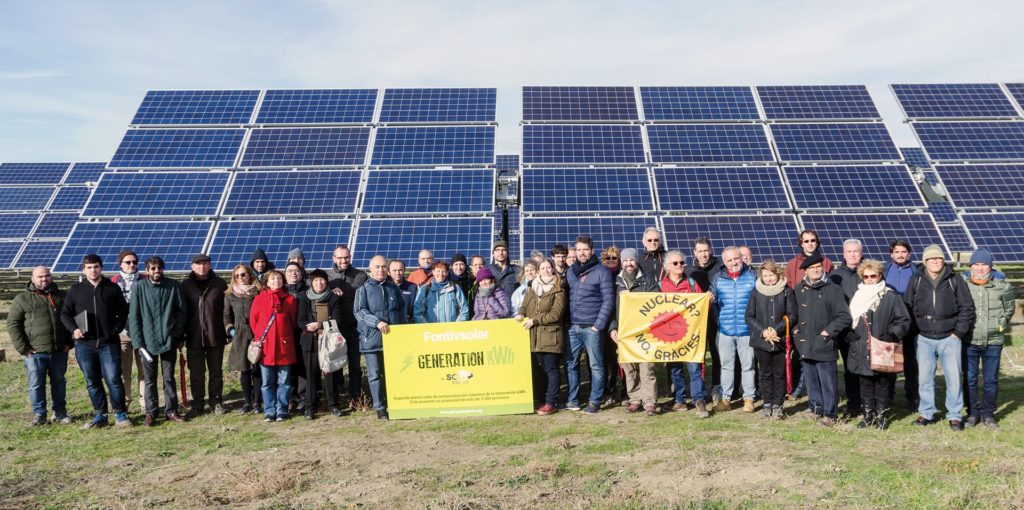The Rising Tide of Energy Communities
Community energy is key to action on the climate crisis. It can empower people, boost local economies, and reinvigorate communities. Community-led initiatives play an important part in the transition towards a just and 100% renewable energy future. Success stories of community energy projects can be found all over Europe. Telling and sharing these stories can accelerate the movement towards a cleaner and more democratic system by inspiring others.
COMPILE, a H2020 project that is supporting the set-up of energy communities in closed or poorly connected systems, has collected a set of best practices from community energy projects across Europe. The aim is to democratize the European energy system by providing solutions for energy communities to grow and flourish. To support this aim, the project has developed a Best Practice Guide, which brings together experiences from the community energy movement across the continent and provides ideas and inspiration to take action.
Setting direction, inspiring change
The guide is built to inspire existing energy communities to broaden their scope and consider new activities and innovative collective models to engage in energy transition projects. These examples may also inspire other organizations and citizens to find the direction they want for themselves when trying to define their role in the energy market. Moreover, they can inspire national policy makers to put in place national policy frameworks that fosters the emergence of energy communities. Finally, local authorities – including cities and municipalities – may find the examples useful and relevant to consider when making and implementing sustainable energy and climate action plans at the local level.
Starting small, taking it slow
Before diving into already existing cases of successful community energy projects, the Best Practice Guide lists some general tips and trends on how cooperatives tend to get up and running in the European context.
The first question to ask yourself when embarking on a cooperative adventure is ‘what is the service you want to provide to your community?’ Cooperatives are created for many different reasons: to tackle climate change, to change energy systems, to create neighborhood action groups, etc. However, a common thread among energy communities is the commitment to create social innovation and to engage in economic activities with non-commercial aims. That social embeddedness of energy communities is often already apparent in the origin stories of these initiatives, with many community energy stories starting with conversations across a kitchen table, at the counter of a local café or in a parent-school board discussion. It is with this strong social rooting that most of them found themselves and were able to grow and expand their activities and reach by starting small and taking it slow.

However, the commitment to non-commercial aims and social engagement does not mean that money and profits are of no concern for community energy projects. Dirk Vansintjan, President of REScoop.eu, the European federation of citizen energy cooperatives, suggests that projects “start with a small but profitable investment project” and “try to find a project that will bring money to the cooperative, in order to finance staff time, which is crucial for the development of future projects.”
The next questions for a community energy project are how to decide on the activity or activities to get your community involved in and how to make those activities future-proof.
A wide scope of activities
Community energy initiatives perform a wide range of activities across the energy sector in order to provide services or other socio-economic benefits to their members and local community. Today, we have cooperatives dealing with renewable energy generation, provision of energy efficiency services (including buildings renovations), retail supply, distribution (of both heat and electricity), storage, flexibility services, aggregation, and electro-mobility services. The Best Practice Guide provides examples of all these types of activities, energy services and citizen-led partnerships to inspire people to take action.
Limitless ingenuity
By taking a closer look at existing energy communities, the Best Practice Guide reveals that they are incredibly diverse when it comes to ownership, governance, organizational structure, scale of activities, type of activities, energy sources used, financing mix, etc. However, what these examples have in common is an immense and limitless ingenuity to cope with the (sometimes difficult) context in which they sprout, and later, try to expand. Examples of successful community energy stories cleverly taking root in different contexts are already abundant in the energy sector.
The need for climate action has never been greater and the potential for community energy across Europe is enormous. Research conducted by CE Delft in 2016 revealed that over 264 million European citizens (about half of the European population) could be producing their own energy by 2050 at home or together in energy communities. The COMPILE Best Practice Guide demonstrates the importance and effectiveness of the community energy movement in tapping into this great potential.